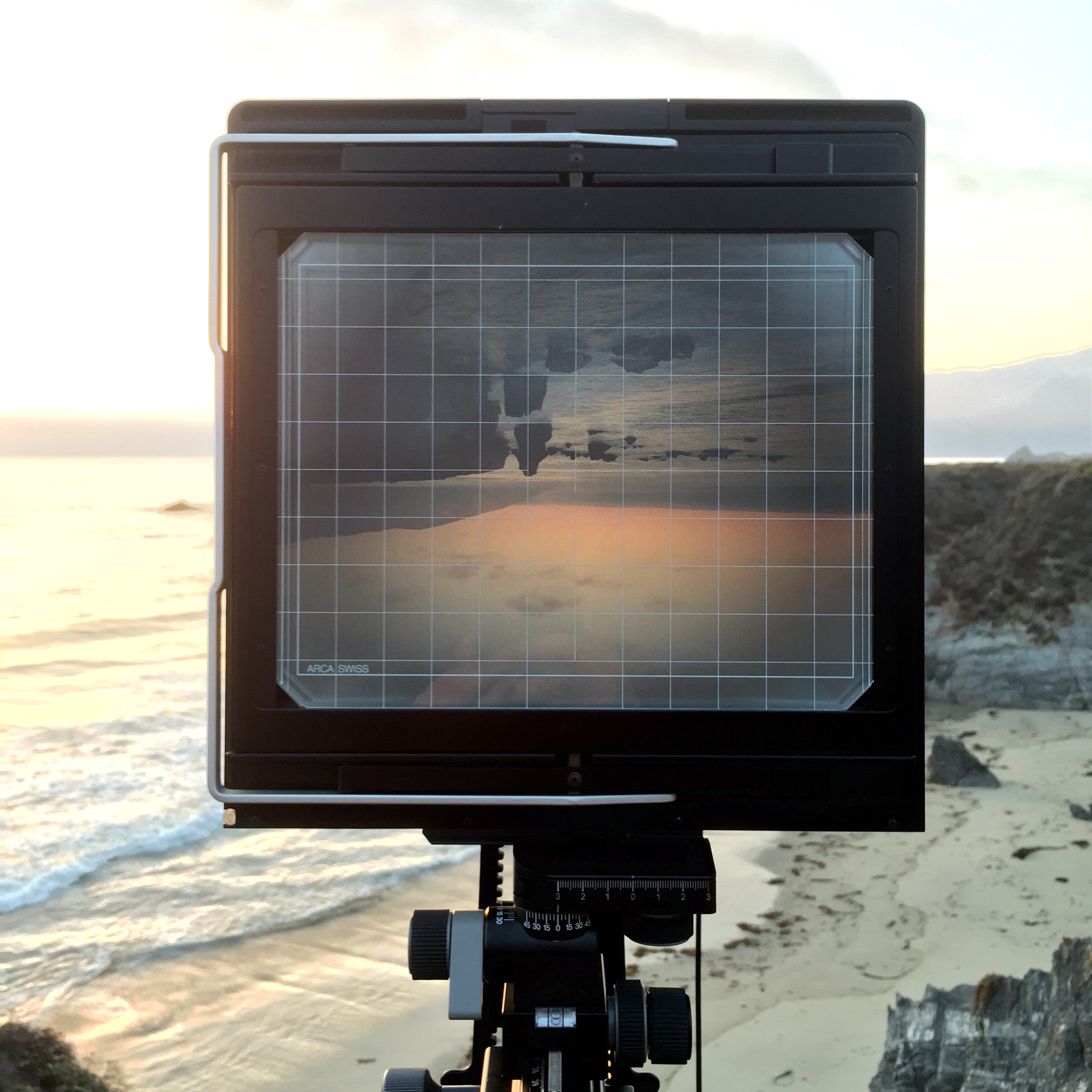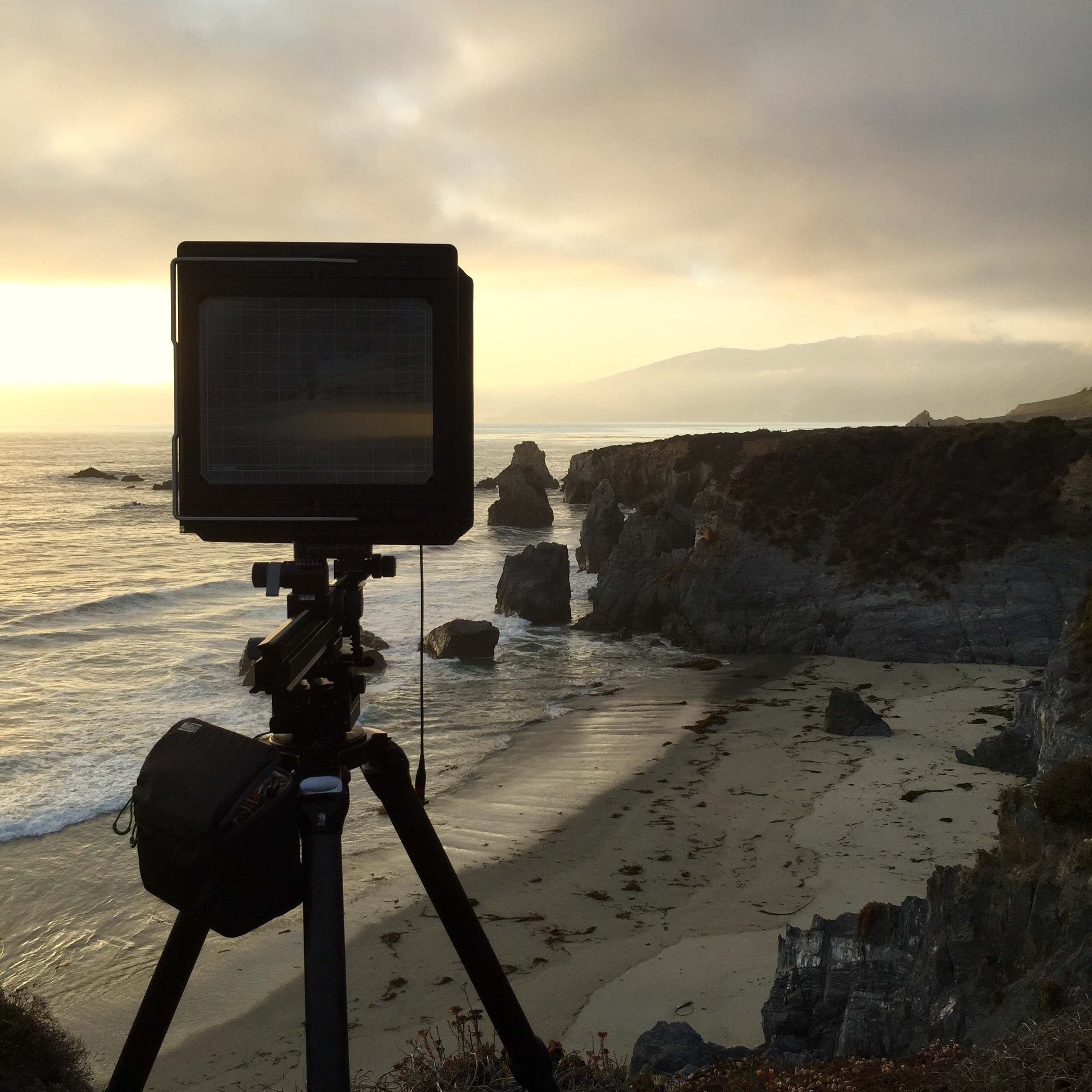| Arca Swiss F-Line Metric 8x10 | Nikkor 300mm | Kodak Ektar 100 |
This stretch of the Big Sur coastline is like something out of a dream. I’ve revisited this beach several times after finding it couple of months ago and each time has been a new experience. It’s difficult to describe the beauty of this place with a single, or even multiple photographs. The beach is about a mile off Highway One, so that short distance keeps 95% of the tourists away and the trail runs for several miles. Sea stacks of all shapes and sizes jet out of the ocean and are constantly being shaped by the power of the Pacific. A change in the tide can reveal new stacks which had been hidden below the surface, or appear to change the shape of those already there. This little oasis is home to an abundance of life from whales, dolphins, birds, and deer. This oasis is my new mini heaven on this stretch of beautiful coastline I now call home.
The cost involved with each of my photographs is astonishing compared to most landscape photographers today. Between gas, the price of the film, the developing cost, and the cost to drum scan it to prepare it for print, this photograph alone costs me nearly $500.
If you like seeing my content, any contribution you can make to help me keep creating my work is highly appreciated. Click the button below to contribute.
To those of you who continue to show your interest in seeing photos from my process, here are a few from the night I exposed "Heaven's Reach."
The ground glass of my Arca Swiss 8x10, showing the composition from the evening I exposed "Heaven's Reach."
Large format and seascapes are two things that usually don’t mix. The slow, meticulous process of large format generally doesn’t lend itself well for the generally fast-paced style of shooting typically associated with the ocean. To add insult to injury, during the prime light of sunset, typical exposures on 8x10 can range from several seconds to several minutes due to the requirement for such small apertures. A lot of digital photographers like to shoot waves ranging from half a second to a couple of seconds. That leaves a slight blur of the wave to add additional movement to the scene as well as time to move out of the way of any other incoming wave.
With this scene, I perched myself along one of my favorite beaches in Big Sur. The tide was on its way in and the pathway down to the beach was overgrown with brush laden with ticks, so I decided to set up along the ridge. I found a nice composition with the sea stacks leading into the mountains in the distance. To make the composition work, I used my Nikkor W 300mm f/5.6, which is considered to be a normal lens on 8x10. With the use of tilt, I achieved the depth of field required to maintain sharpness throughout the scene with an aperture of f/45. I generally use three film stocks when shooting dynamic landscapes such as this. When shooting in low contrast light or in light where I can easily control the highlights with filters, I shoot with either Fuji Velvia 50 or Fuji Provia 100F. Both of these are positive films with incredibly low grain and produce fantastic color and contrast. When shooting into the sun or in very high contrast situations, I use a negative film called Kodak Ektar 100, which is what I decided to use for this scene. Though I have personally never over exposed Ektar, I still decided to use a two-stop graduated neutral density filter to keep some of the brighter areas of the scene in check.
The Arca Swiss 8x10 set up, waiting for light along my favorite stretch of coastline in Big Sur, California.
When I’m not backpacking with my 8x10 setup, I like to use the sturdiest tripod available, which is my Really Right Stuff TVC-44. The thick carbon fiber legs give me more than enough support for the weight of the camera during the long exposures required for large format photography. If I ever need any extra stability, I’ll sometimes hang my bag underneath with an adjustable climbing webbing to ensure the bag doesn’t shake in the wind.
This was the third time I had visited this location, having found the spot several months before, but had never exposed a sheet of film. I generally try to watch several sunrises and sunsets at a location before shooting to analyze how the light falls on the scene. During that time, I’ll sit in different spots, watching the light and mark compositions in my head or on my GPS to revisit with a camera. I take into consideration the direction the sun will rise and set, the time of year that will create the light I’m wanting, and the weather.
On this particular evening, the light was falling into the cove I had picked out a couple of weeks prior and the forecast looked promising for clouds, as a summer monsoonal pattern had been in the area. After I had set up, composed and focused, I waited for the right light to expose a sheet of film. As the sun began to touch the top of the distant marine layer, casting a beam of light on the mountains in the distance, I loaded my film holder, pulled the dark slide, and waited for the right wave. I spot metered the shadows at about zone III to zone IV to properly expose Ektar with a handheld Sekonic L-558. At f/45, my shutter speed was right around 2 seconds, which would be perfect to smooth the texture of the water, but still maintain a bit of detail. I waited for the right set of waves and exposed this sheet, as well as a backup sheet, just a few moments apart.



